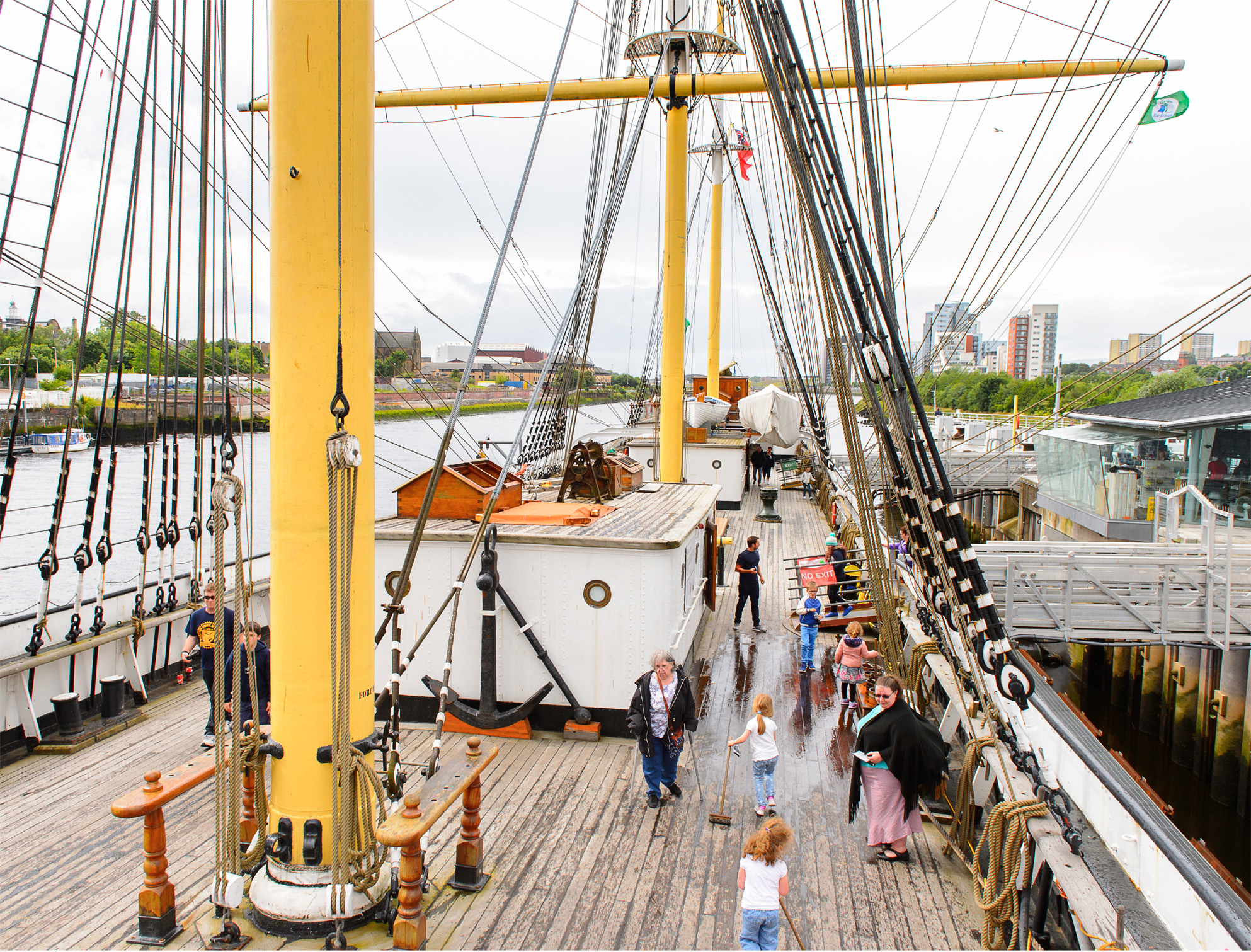Glasgow

t Three masts of the Tall Ship Glenlee looming high above the Clyde
Experience Glasgow
Glasgow’s city centre, on the north bank of the River Clyde, has been occupied since ancient times. The Romans already had a presence in the area some 2,000 years ago, and there was a religious community here from the 6th century. Records show Glasgow’s growing importance as a merchant town from the 12th century onwards.
Historic buildings such as Provand’s Lordship, a 15th-century town house, remind visitors of its pre-industrial roots, but modern Glasgow grew from the riches of the British Empire and the Industrial Revolution. In the 18th century Glasgow imported rum, sugar and tobacco from the colonies, while in the 19th century it reinvented itself as a cotton-manufacturing centre. It then became a site for shipbuilding and heavy engineering works, attracting many incomers from poverty-stricken districts in the Scottish Highlands and islands and Ireland in the process.
Between the 1780s and the 1880s the population exploded from around 40,000 to over 500,000. The city boundaries expanded exponentially and, despite an economic slump between the two world wars, Glasgow clung to its status as an industrial giant until the 1970s, when its traditional skills were no longer needed. The city has since bounced back; it was named European Capital of Sport in 2003 and hosted the 2014 Commonwealth Games, while a £500 million project at Glasgow Harbour has transformed the city’s old shipyards and dockland into a hub for commercial, residential and leisure usage.
